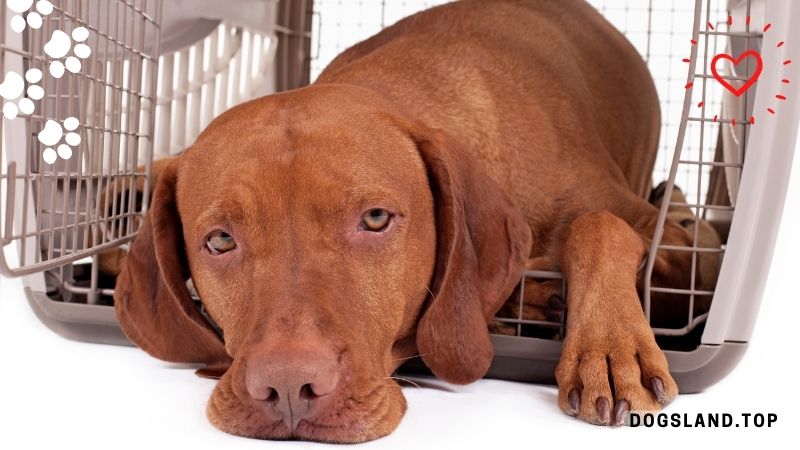How to Train Your Dog to Love His Crate Fast

The primary goal of this post is to educate readers on the value and functionality of dog crates.
When should you use a dog crate?
In addition to providing a secure space for your puppy or young dog to learn appropriate behavior, crates may also be used as an effective training tool. Some owners even think dogs naturally like dens, and that offering a crate for their pet is similar to meeting that need.
Teaching a puppy to regulate his or her bowel and urine movements:
Dog crates, when used correctly, may help you train your puppy to use the bathroom outside of the house, and they can also help you establish boundaries on what your dog can and cannot chew on.
Puppy crate training is beneficial because most canines have a strong behavioral bias towards soiling their sleeping or resting spaces.
In this way, you may educate your dog to regulate his or her bowel and bladder movements by using the crate and allowing the dog to go outside to relieve itself at regular intervals.
– Get your dog adapted to living in smaller places:
Another major perk of crate training is acclimating dogs to smaller spaces in the event that they must be confined.
It’s a good idea to get your dog acclimated to being in a crate before you need to take him to the vet or leave him at a boarding facility. Read more: 6 Steps To Take Your Dog on a Vacation.
The same applies to trips made by automobile, aero plane, or any other mode of transportation. Plus, dog passengers who are restrained in crates have a greater chance of survival in the case of a collision.
– Dog security:
Your dog is less likely to get into anything dangerous while you’re gone if they’re confined to a crate in the house.
How to Crate Train Your Dog:
Now that I’ve convinced you to buy a dog crate and explained why it’s a good idea, I’ll provide some training suggestions to help you get the most out of your dog crate.
Right place for putting the crate:
Initial steps should be made toward deciding where the crate should be placed. The best spot to keep the crate is wherever you and your family spend the most time at home.
Then you should line the crate with a blanket or towel and maybe add a small toy. If you can’t keep your dog from wandering in and out, remove the door or elevate it.
Just let the dog sniff around in there. Most dogs are naturally inquisitive and will start investigating their new crate environment without any encouragement.
If your dog doesn’t naturally want to use the crate, you might attempt to coax them in by bringing them over to it. Small goodies may be used to entice them inside the crate.
Don’t force the dog to enter the crate:
It’s important to be patient and use rewards to encourage them into the crate. It may take some dogs many minutes, or even days, to achieve this.
Once your dog has become used to being around the crate, you may go to serving him regular food inside the crate.
When the dog is used to eating in the crate, you may shut the door while it eats and then open it again when it’s finished.
After the first experience with the door closed, you may gradually increase the amount of time until you’ve left your dog in the crate for 10 to 15 minutes after a meal.
If your dog starts whining when you shut the door, it may be because the duration is too long.
But you can’t let them out while they’re complaining. Don’t give in to their whimpering right away, or they’ll start expecting to be released every time they complain.
After your dog has gotten used to eating in the crate and spending some time there after eating, you may gradually increase the amount of time they spend there. When you’re at home, you’ll start crating the dog for brief periods of time.
As you lead your dog to the crate, you may use a command like “crate” to cue him to enter. When your dog successfully completes the crate training, you will praise him, reward hem with a tiny treat, and then shut the door.
Start out near to the crate, but after a few minutes, go to a different room so the dog can’t see you.
Gradually increase the amount of time he spends in his crate:
Once the dog is able to settle down for thirty minutes or more at a time, you may gradually increase the length of time spent in the crate or even have it sleep there at night.
To reiterate, this process is not instantaneous and may take anywhere from days to weeks.
Leave your dog alone for thirty minutes before increasing the time you spend apart.
You still use the standard crating procedures, such as giving the instruction to go inside the crate, praising him when they do, and rewarding him with a treat upon exiting.
Your dog will be OK in a crate for five to twenty minutes while you are gone. You should switch things up so kids don’t become bored with the routine and start to feel nervous.
If you don’t want your dog to feel anxious, you shouldn’t get him overly excited when you get back.
Even if you’re never going to leave your dog alone, you should still crate him sometimes while you’re home.
Many dog owners feel bad about crating their dogs for fear of becoming cruel. It’s not harsh at all if you teach your dog properly.
If employed correctly, you will have succeeded in providing your loved one with a private sanctuary. Sometimes, even after the training session is over, a dog may want to spend some quiet time in his crate.